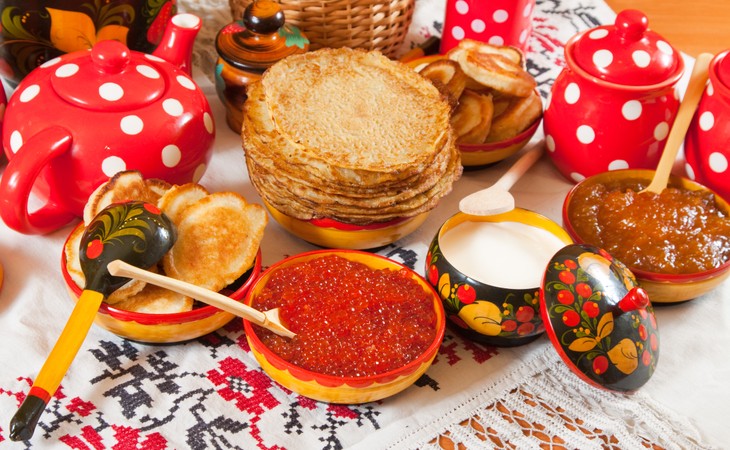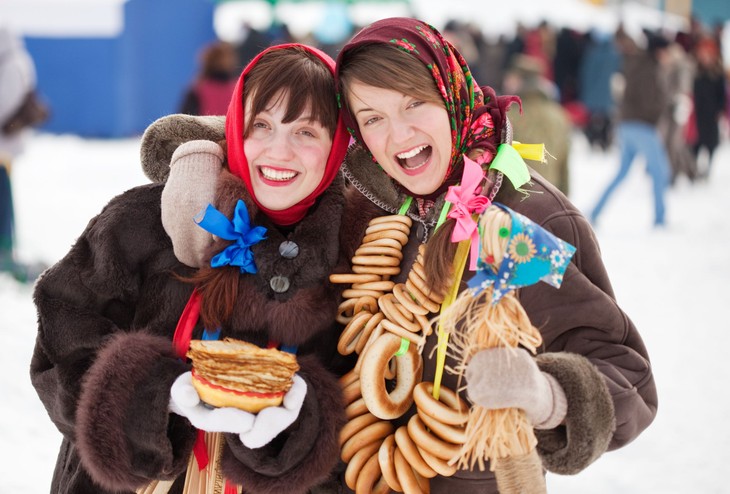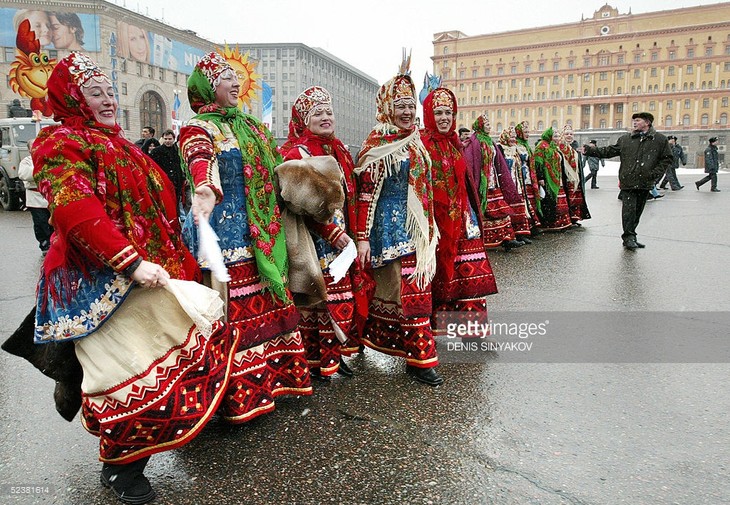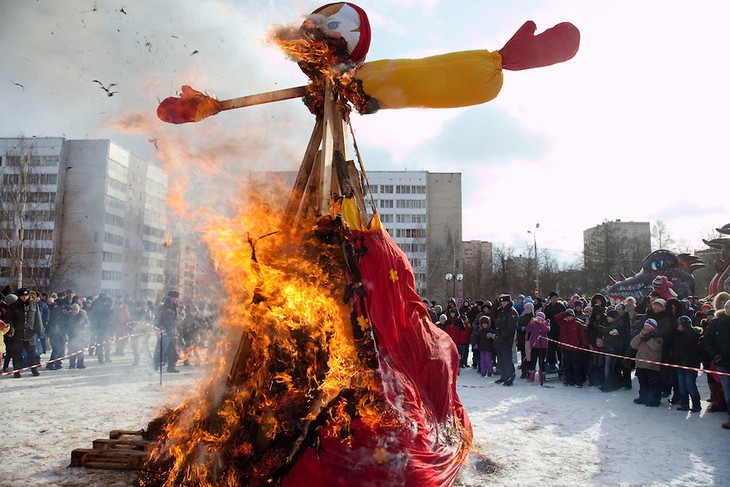(VOVworld) - March marks the transition between winter and summer. In Russia, March is even of special importance because it’s time for the Maslenitsa Festival. With other names such as the Sun Festival, the Pancake or Butter Week, this festival celebrates the end of the coldness and the start of warmth, of hope, and of growth. Today we talk with Ms. Kornienko Natalia, a project manager at the Russian Center for Culture and Science in Hanoi, to learn more about this interesting event.

Pancakes, one of the most significant features of the Maslenitsa Festival (Photo: The Kompass) |
Q: Hello Natalia, thank you very much for joining us on air! I learnt that the traditional Slavic festival of Maslenitsa is a favorite time of year for Russian people. But can you explain to me the meaning of the event itself?
A: According to the full calendar of the Eastern Slavs, March symbolizes the border between winter and the upcoming spring. So it’s possible to say that Maslenitsa is farewell to winter. The Russian people have celebrated this Festival for many centuries and were able to preserve some features of Slavic mythology from those ancient times.
Q: How long does the Festival last?
A: Russian people usually celebrate Maslenitsa over 7 days, from Monday to Sunday. Though Maslenitsa’s a very traditional holiday and everybody in Russia does celebrate it, unfortunately there is no official vacation during this week.
Q: What do Russian people usually do during the week of Maslenitsa Festival?
A: The main traditional activities that Russian people do on those days include: sledging from the hill, cooking traditional pancakes, singing folk songs, snow fighting, horse riding and other different traditional fighting games. Also, people visit friends and relatives. Russian people believe that noise and excitement during these days can help waken the spring and bring a good harvest in the summer.
 |
The Maslenitsa Festival is sometimes referred as the Russian pancake Week.
(Photo:
World Festival Directory)
|
Q: You just mentioned the tradition of making pancakes and I know that the Maslenitsa Festival is sometimes referred as the Russian Pancake Week, which make me kind of curious: How special is the food?
A: You know, the pancake of the traditional Maslenitsa food because it symbolizes the sun. It’s different from American pancakes because Russians tend to make it thinner and they eat pancakes with different kinds of jam, heavy cream, honey, clotted cheese.
Q: Do you have any special dress or costume to wear during the Festival?
A: No there is no special dress for Maslenitsa. Russian people only put on the normal traditional dress that can be worn for any other occasion. But as I say Maslenitsa is considered one of the most traditional holidays of the year, so people, especially children, like to wear traditional costumes. Usually it is a dress which contains many layers. The most traditional color is red, but there are also other colors like blue, and green. But they are all natural colors because earlier in Russia, colors could only be taken from nature. The dress can also be embroidered with traditional motifs. There are also head scarves or a special hat which is called “kokoshnik”. Kokoshnik can also be embroidered with pearls and decorative drops.
 |
| Russian women will wear traditional dresses during the Maslenitsa Festival, including the special 'kokoshnik' hat. (Photo: Getty Images) |
Q: Wow, that sounds amazing! Hey Natalia, where in Russian are you from?
A: I’m from Moscow.
Q: Does your city have any special decoration for the Festival?
A: Moscow is a very, very big city and during Maslenitsa, the city is decorated in many different places. Squares are decorated with small colorful flags and pictures of traditional motifs. However, the symbol of the holiday and the most important decoration is the scarecrow of Maslenitsa. Because it’s the symbol of winter so it must be burnt at the end of the Festival. Each square, each home or each fair can have its own scarecrow.
 |
The scarecrow of Maslenitsa, the symbol of the holiday, must be burnt at the end of the Festival. (Photo: The Jeremy Nicholl)
|
Q: Is there any traditional activity that you perform during the 7 days of Maslenitsa?
A: Yes, on Wednesday, the mother-in-law must invite her son-in-law to treat him to handmade pancakes to show her sympathies but nowadays, very few people know of this custom and follow it. But again, I can say that almost all traditions survive and are still familiar to the younger generation in Russia.
Q: But since the Russians spend a whole week just to welcome spring, does that mean they really really hate winter?
A: You know, winter has frost and lots of snow but for me winter is fun because it provides you many different games such as sledging, skating, and skiing. And I like the cold. For me winter is the best time of the year. When I come to Vietnam, I really miss it.
Q: The recent Maslenitsa Festival held at the Russian Center for Culture and Science in Hanoi attracted the participation of many local people. What do you think about the reception of Vietnamese people to one of the signature cultural traits of Russia?
A: This year the Maslenitsa was held with great success. We managed to present a great variety of Russian traditional entertainments for adults and children. I’m pretty sure that all the Vietnamese guests loved spending time with us in such a happy celebration. I hope that next year, the holiday will attract more attention not only from the local community but also from the foreign representatives.
Q: Thank you Natalie for the lovely conversation!